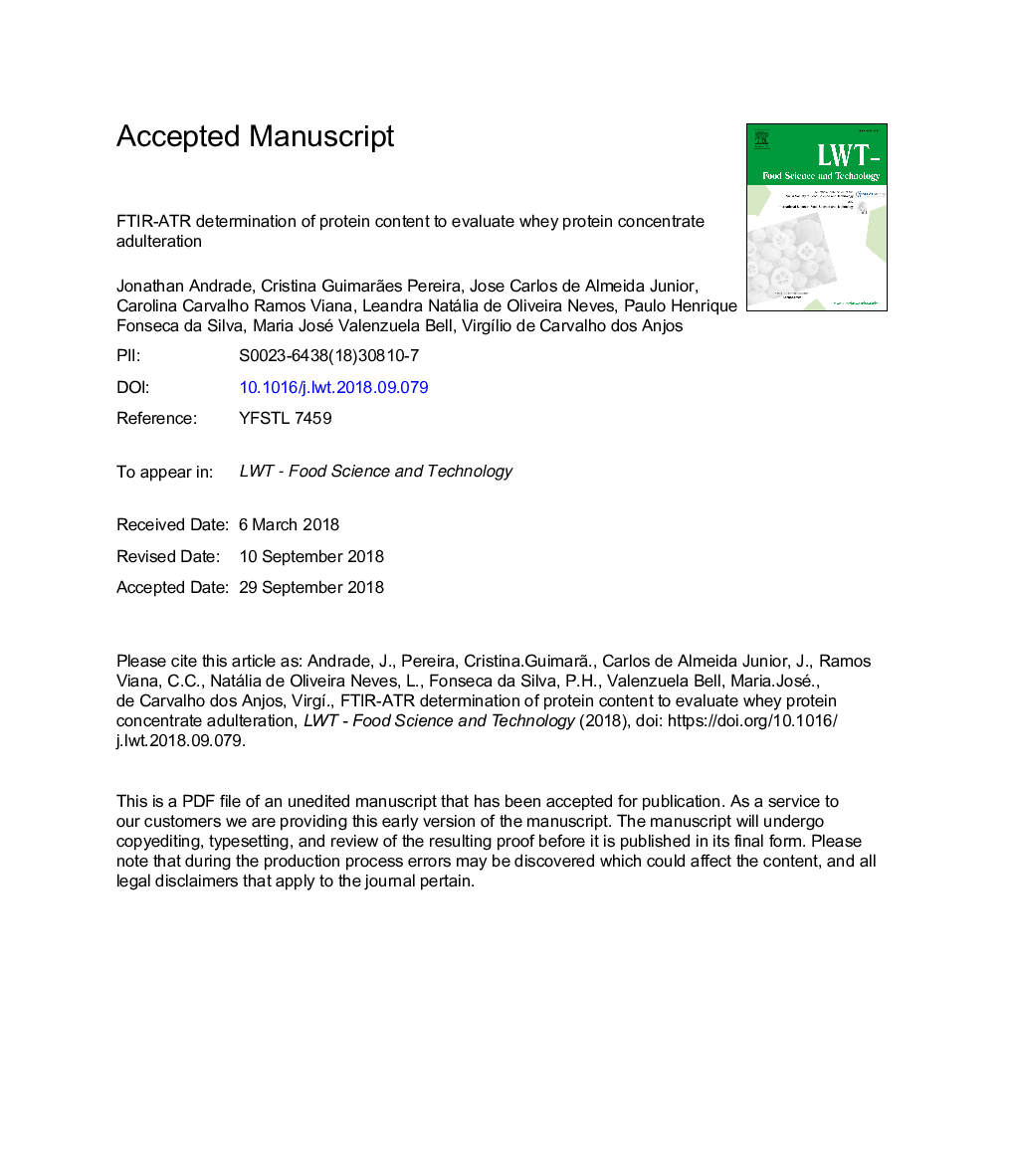| Article ID | Journal | Published Year | Pages | File Type |
|---|---|---|---|---|
| 11024854 | LWT - Food Science and Technology | 2019 | 27 Pages |
Abstract
We evaluated the potential application of Fourier-Transformed Infrared spectroscopy using Attenuated Total Reflectance (FTIR-ATR) to characterize and detect adulteration of whey protein concentrate (WPC). Samples were adulterated by substituting WPC by milk whey powder (MWP). Principal Component Analysis (PCA) was used to characterize the spectra. Partial Least Squares (PLS) regressions were applied to model and predict the protein content and the amount in grams of WPC and MWP in the samples. In WPC, Amide I and II bands showed decreasing trend with the protein content of the samples. The carbohydrate region between 1160 and 1000â¯cmâ1 showed spectra with opposite behavior of the Amide bands, evincing the ν CO peak (1030â¯cmâ1) that increases as MWP was added. In PCA, PC1 (64.5%) and PC2 (18.8%) described above 80% of total variance of the spectra. PC1 variance was most influenced by Amide I, II and carbohydrate regions. In all cases, PLS showed low prediction errors, high precision and coefficients of determination of the global fit above 0.99. Therefore, the association of FTIR-ATR spectroscopy with multivariate approaches revealed strong potential to detect adulteration in nutritional supplements and high accuracy to predict simultaneously the protein content and mass of WPC and MWP added.
Related Topics
Life Sciences
Agricultural and Biological Sciences
Food Science
Authors
Jonathan Andrade, Cristina Guimarães Pereira, José Carlos de Almeida Junior, Carolina Carvalho Ramos Viana, Leandra Natália de Oliveira Neves, Paulo Henrique Fonseca da Silva, Maria José Valenzuela Bell, VirgÃlio de Carvalho dos Anjos,
